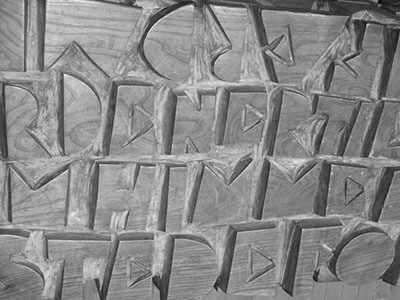Linguistic variety in the Nordics

Quick overview:
- In Denmark the principal language is Danish, with about 5,750,000 speakers (in 2018), but varieties of German are spoken in northern Slesvig by some 20,000 people, and Denmark is also host to 10,000 or more Faroe Islanders, whose native language is Faroese.
- Sweden has approximately 10,000,000 speakers of Swedish; in addition there are approximately 250,000 Finnish immigrants who retain their native tongue, while in the north of the country Meänkieli is spoken by about 20,000 people in the Torne Valley; northern Sweden is also home to about 10,000 Sami speakers.
- Norwegian is the native idiom of almost all 5,000,000 or so Norwegians, but the language has two official written norms, bokmål and nynorsk; some 22,000 Sami speakers can also be found scattered across the centre and north of the country.
- In Finland about 94% of the population, almost 5,170,000 people, speak Finnish, the remaining 6%, about 330,000 people, are Swedish speakers; there are also 2,500-3,000 Sami speakers in northern Finland.
- In the Faroe Islands both Faroese and Danish are official languages, but those who speak Danish natively tend to be immigrants from Denmark or children of such immigrants; Faroese is the first language of virtually all the islanders, who number about 50,000.
- Iceland is the only Scandinavian country without a minority language; all the 338,000 or so natives speak Icelandic.
- The linguistic situation in Greenland resembles that in the Faroes: both Greenlandic (Kalaallisut) and Danish are official languages, but Danish tends to be spoken natively chiefly by Danes, although some Greenlanders have it as their first language; the population of Greenland is 56,000.
(Figures are as of 2018.)
What is a ‘language’?
Danish, Finnish, Icelandic, Norwegian and Swedish are defined in relation to a nation state. Each of the five has a relatively fixed form (or forms in the case of Norwegian); grammars and dictionaries exist, written material of diverse kinds is available, and the languages are studied in school and at university. Variations from the established norm(s) are classed as dialects or, where the variation has a social basis, sociolects.
The situation of Faroese and Greenlandic is less clear-cut, but with the extensive home-rule practised in the Faroes and Greenland, and the establishment of linguistic norms for both idioms, they are well on their way to becoming national languages.
The situation for the Sami language is quite different. Notwithstanding that they have no state of their own, the Sami tend to be treated as a single people, and following from this their varying forms of speech are deemed to be dialects of ‘the Sami language’. In reality, different forms of Sami can be mutually unintelligible, and it would make equal sense to describe them as different languages since mutual intelligibility is the main criterion by which languages without a clear norm are distinguished from one another.
Non-indigenous languages
To the indigenous tongues of the Nordic region immigration has added many new community languages. The oldest of these is Romani, whose history in the Nordic countries appears to go as far back as at least 1500. It was in the 1960s, however, that large numbers of people speaking non-indigenous languages began to settle in Scandinavia. The long-term linguistic effect of late twentieth- and twenty-first century immigration is difficult to predict. Most probably the immigrant languages will gradually die out, unless continually reinforced from the homeland, but they are likely to leave traces in the indigenous tongues of the region; indeed such influence has already been reported.

The common origin of the Scandinavian languages means that they are relatively similar. Standard varieties of Danish, Norwegian and Swedish are mutually intelligible, though the extent of understanding varies.
The ancestry of the Nordic languages
Danish, Faroese, Icelandic, Norwegian and Swedish form a clear group with a common ancestry, and are often called ‘Scandinavian’ as opposed to the other languages of the region known less specifically as ‘Nordic’. Some writers, however, restrict the term Scandinavian to Danish, Norwegian and Swedish, while others call these three ‘Mainland Scandinavian’ and Faroese and Icelandic ‘Insular Scandinavian’.
The Scandinavian group belongs to the Germanic branch of the Indo-European family of languages. Germanic also comprises Dutch, German and English, while other branches of Indo-European include Celtic (Irish, Welsh, etc.), Romance (French, Italian, etc.), Greek, Slavonic (Polish, Russian, etc.), Iranian and various languages spoken in the northern part of the Indian subcontinent.
The Scandinavian group shares features such as grammatical gender with other Indo-European tongues, and a past-tense formed by vowel alternation or the addition of a -d, -ð or -t suffix with its Germanic sister languages (cf. Norwegian synger-sang, åpner-åpnet, English sing-sang, open-opened, German singe-sang, öffne-öffnete). Unlike Indo-European languages, Finno-Ugrian and Eskimo-Aleutic are without grammatical gender. Language families and branches will also normally share certain basic vocabulary items. In most Indo-European tongues, for example, the numerals from one to ten can be shown to be cognate. The Finnish equivalents are different, but similar to the basic numerals in Estonian and, for the most part, Sami. Greenlandic employs a different set of basic numerals again.
The common origin of the Scandinavian languages means that they are relatively similar. Standard varieties of Danish, Norwegian and Swedish are mutually intelligible, though the extent of understanding will depend on factors such as education, experience and background noise. Studies have shown that Norwegians by and large find it easier than Danes and Swedes to understand their Scandinavian neighbours. Two factors in particular are at work here: the common Dano-Norwegian literary language which existed until the turn of the twentieth century, and the shared sound system of Norwegian and Swedish. Communication between Danes and Swedes tends to be the most difficult. Faroese and Icelandic are not mutually intelligible with standard Danish, Norwegian or Swedish, nor, except at a fairly basic level, with each other. Limited understanding can occur between speakers of Faroese and certain west Norwegian dialects.
Finnish and Sami belong to the Finno-Ugrian branch of the Uralic language family, which also includes Estonian and Hungarian as well as a number of languages of the former Soviet Union. Greenlandic is a branch of Eskimoic, part of the Eskimo-Aleutic family spoken in Alaska, eastern Siberia and the Aleutian islands.
Isolation vs. interaction with speakers of other languages
The chief cause of the dichotomy between Danish, Norwegian and Swedish (Mainland Scandinavian) on the one hand and Faroese and Icelandic (Insular Scandinavian) on the other is the relative geographical isolation of the Faroes and Iceland. The shared development of Danish, Norwegian, and Swedish reflects a shared political and social history, in which the island communities of the North Atlantic participated only marginally, despite their centuries-long status as Danish colonies.
Isolation tends to favour linguistic retention, and what chiefly distinguishes Insular from Mainland Scandinavian is the preservation in the former of traditional Scandinavian vocabulary and the inherited Scandinavian inflexional system. Language in Denmark, Norway and Sweden was subject to more outside influences and changed drastically as a result, especially in the late Middle Ages. The presence of Hanseatic traders in large numbers in the growing towns of Scandinavia resulted in a radical Germanisation of the vocabulary. Indeed, it is not easy to construct more than a brief sentence or two in the present-day languages without employing words or affixes (e.g. an-, be-, -het, -aktig) of North German origin. Prolonged contact with North German speakers may also, in part at least, have caused Danes, Norwegians and Swedes to adopt a grammatical structure akin to that of English, a language also exposed to waves of foreign influence.
As long as Danish was taught as the principal foreign language in Iceland, it was possible for Icelanders to converse with fellow Scandinavians without resorting to a non-Scandinavian tongue. However, English has now usurped the position of Danish, and it is English that is increasingly used in communication between Icelanders and their fellow Scandinavians. In the Faroes Danish remains an official language and all the inhabitants learn to read, write and speak it from an early age. Yet many of the older generations pronounce it in the Faroese manner (often deliberately), with the result that it can sound as much like Norwegian as Danish.
Some fundamental features compared with English
It is instructive to compare a few fundamental features of English and the Nordic languages. All started out with the three-gender system of Indo-European, but only Faroese and Icelandic retain it fully; English has dispensed with grammatical gender entirely, while in standard Danish and Swedish, and to a large extent Norwegian bokmål, masculine and feminine have coalesced.
Further reading:
- Einar Haugen, The Scandinavian languages: an introduction to their history (London: Faber and Faber, 1976)
- Ekkehard König and Johan van der Auwera, eds., The Germanic languages, (London/New York: Routledge, 1994)
- Lars S. Vikør, The Nordic Languages: Their Status and Interrelations (Oslo: Novus, 2002)
- Robert Petersen, ‘Det grønlandske sprog’, in Allan Karker, et al., eds., Nordens språk (Oslo: Novus, 1997)